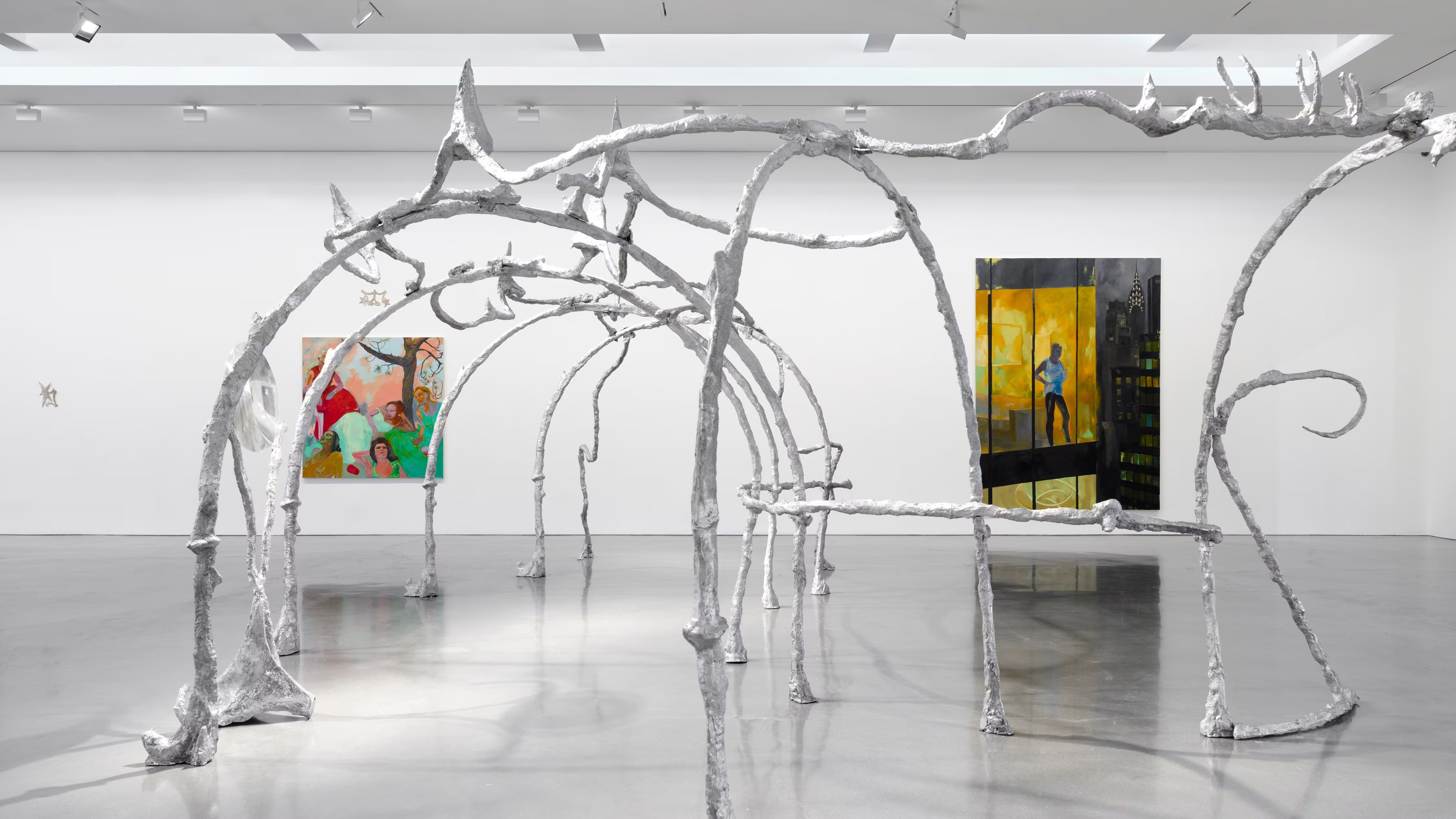
Jazz clubs were the first communal spaces Jon Batiste can remember. Long before his five Grammys and an Oscar, the New Orleans native’s stomping grounds were local music temples, like Sweet Lorraine and the Spotted Cat. “Those venues made music social for me, long before it was intellectualized,” he tells Family Style. Now, Batiste returns to his roots with a brick-and-mortar ode to the venues that helped him build his career at the Baha Mar in the Bahamian capital of Nassau.
“Home vibration is the best possible way to create a jazz club,” he continues. In order to orchestrate Batiste’s vision, the luxury resort tapped New York-based design firm Gensler to create a space in the spirit of era-defining venues such as Havana’s Buena Vista Social Club and the Glass Bucket in Kingston.

Just complete, the 12,900-square-foot hall is gilded but contemporary. Alluring with a sleek finish, it features a large stage, various circular lounging areas (with a total of 278 seats), V.I.P. booths, and a central bar. Archival jazz ephemera such as photographs, posters, and records decorate the walls in addition to two mixed-media paintings by the Bahamian artist April Bey. The portraits in fabric, fur, vinyl, and glitter radiate the Los Angeles-based painter’s Afrofuturist universe, which falls into an unexpected dialogue with the venue’s retro homages.
As Batiste reflects on the process, he says it was the pursuit of a blend of high and low that drove his choices: “bespoke design decisions and color schemes,” he says, “a place to kick my shoes off and get onto the stage to dance.” Siobhan Barry, the principal and design director at Gensler, calls working with a musician on an interior project “a fabulous challenge.” She credits Batiste’s musical sensibilities with adding an “energy that creates movement and spontaneity,” hinting at future performances at the venue. A mutual goal for the musician and the design team was to “make every part of the room feel like part of the stage,” says Barry. “The energy and celebratory vibe of New Orleans cannot be contained in a single stage location.”

The design team approached the layout like a clock, which put the stage at 12:00 p.m. and the bar at 6:00 pm. “This strategy ensures that every guest would always be facing either the stage or the rest of the crowd,” explains Barry. The chairs’ ability to swivel 360 degrees makes sure the bar becomes the point of attraction during intermission and sustains the overall energy.
For Batiste, a jazz venue is about dismantling any form of hierarchy. “Everything must point back to jazz culture and the African diaspora,” explains Batiste of his mission. “We have to take the potency of this art form, which has often been conciliated by tourism, and make sure to celebrate the intellectualism and the beauty in its rawest form.”














.avif)


_result_result.avif)



.avif)

_result_result.avif)

_result_result.avif)
.avif)

_result_result.avif)


_result_result.avif)


.avif)




.webp)

.avif)












%20(1).avif)
.avif)




.avif)







.avif)


.avif)





















.jpeg)

.avif)

_11%20x%2014%20inches%20(2).jpg)







.avif)

.jpg)

%20(1).jpg)
.avif)
.jpg)

.jpg)
.webp)


.webp)



.webp)


.webp)


.avif)












.avif)
.avif)












.avif)



.avif)




















-min_result.avif)









.avif)







3_result.avif)
_result.avif)






_result.avif)




.avif)




.avif)













_result.avif)




%2520(1)_result.avif)
_result.avif)


_result.avif)

_result.avif)



.avif)

.avif)



















.avif)


_result_result.avif)
















-min_result.avif)






.avif)
.jpg)
















_result.avif)

.avif)


.avif)







.avif)





.avif)

_result.avif)



.avif)









.avif)

















.avif)




.avif)








.avif)

.avif)

.avif)



.avif)


.avif)




.avif)

.avif)

.avif)
.avif)
%20(1).avif)
.jpg)

%20(1).avif)








.avif)
.avif)

.avif)






.avif)


.avif)
.avif)



.avif)
.avif)
%20(1).avif)

.avif)
.avif)

.avif)
.avif)



















.avif)
.avif)
